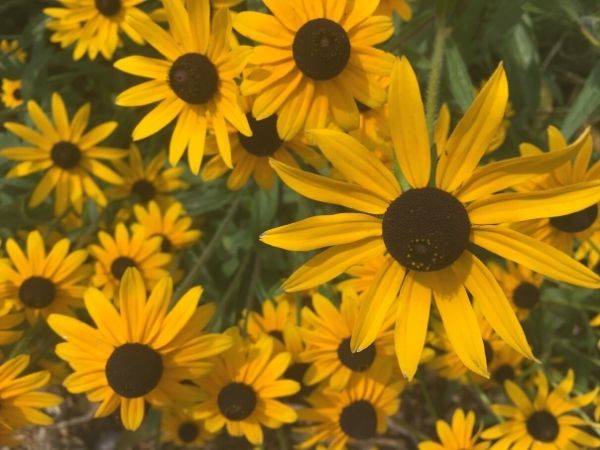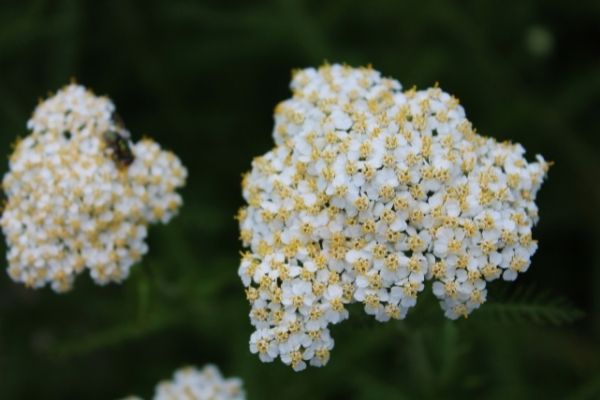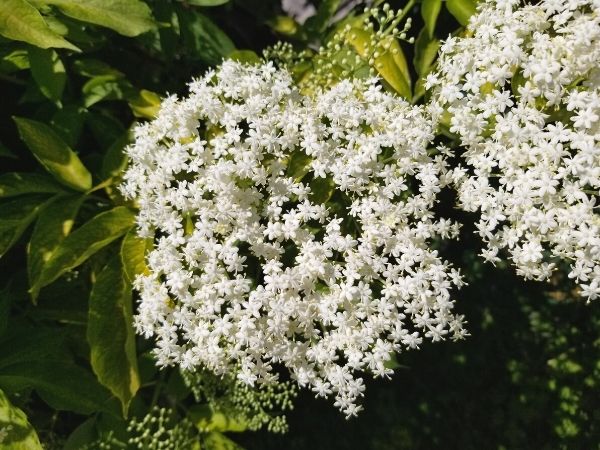Carl Linnaeus, an 18th-century naturalist and botanist, devised the scientific naming system that we use today. Based on a two-name (binomial) system, a plant is given a genus name and a species name. The species name is (usually) a descriptive specific characteristic, both commonly of Latin or Greek origin. That plant can be recognized by its scientific name throughout the world, no matter what the native language might be.
It’s more often the case, though, that a group of non-scientists give a plant a name in their native language. This is what we call their common name. It is typically based on physical or behavioural characteristics, interactions, or plant use.
Here’s a closer look at a few common native plant species found in the LEAF Learning Garden and the theories behind their names.
Black eyed Susan (Rudbeckia hirta)

Who was Susan? Many claim the name black-eyed Susan originated from an Old English Poem written by John Gay (1685-1732) entitled ‘Sweet William’s Farewell To Black-Eyed Susan’.
All in the downs the fleet was moored,
Banners waving in the wind.
When Black-eyed Susan came aboard,
And eyed the burly men.
‘Tell me ye sailors, tell me true,
If my Sweet William sails with you.
Legend has it that Susan was searching for her lover, William, prior to his departure on a long sea voyage. She’d been crying and had black circles around her eyes.
Yarrow (Achillea millefolium)

Elderberry (Sambucus canadensis)

Sambucus, the Latin name for elder, has clear etymological (the way a word originated) roots: it can be interpreted as a reference to the sambuca, an ancient wind instrument made from the hollow wood stems of the elderberry tree. Some believe that Pan’s panpipes - the Greek god of nature who watches over shepherds and their flocks - were originally made from elderberry wood.
Joe Pye Weed (Eupatorium purpureum)

The origin of this unusual plant name is said to be an 18th Century Native American herbalist called Joe Pye, who used a local plant to cure a variety of illnesses including typhoid fever. For years, it was unknown if Pye was a real person or a botanical myth until research confirmed the plant’s name originated from the nickname of Joseph Shauquethqueat, a Mohican chief who lived in Massachusetts and New York in the 18th and early 19th centuries.
LEAF Garden Steward volunteers plant and care for the Urban Forest Demonstration Gardens. These native plant gardens showcase the beauty and importance of green spaces within an urban environment and are open for anyone to visit. Our Gardens are accessible to the public and we ask that all visitors follow COVID-19 guidelines that apply to public areas in the City of Toronto.
If you are interested in joining our Garden Steward Teams, visit our Volunteer page.
Sarah Halonen is the Stewardship Coordinator at LEAF.
LEAF’s Urban Forest Demonstration Gardens are supported by the Toronto Transit Commission.
